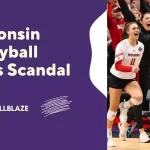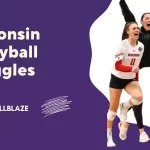
Let’s imagine that you are entering a conference room to do a presentation, and everyone looks at you. I can say what you feel now. You feel that the entire weight of the space falls on your shoulders. Your presentation’s opening remarks have the power to shape the whole encounter. The first few minutes of a presentation are crucial because they draw in the audience and establish the groundwork for a good one. We will examine the craft of creating effective openings and their potential impact on your audience in this blog. A key component of being an expert in successful communication, regardless of experience level, is learning How to Start Presentation. If you want to improve even more, think about signing up for a Presentation Skills Course, where you may learn more about the subtleties of powerful presentations.
The Importance of a Strong Opening
Why is the presentation’s introduction so important? Consider it your audience’s first impression of you. An engaging beginning builds rapport with your audience in addition to grabbing their attention. By laying the groundwork, it increases interest and anticipation of what’s to come. In a world where people’s attention spans are getting shorter, getting your audience interested early in your presentation is essential to keeping them interested throughout.
Captivating Storytelling
One of the most effective ways to start a presentation is through storytelling. Because humans are story-lovers, a compelling tale may enthrall an audience right away. Provide a personal story, anecdotal evidence, or a pertinent case study that relates to the subject of your talk. This engages your readers in the discussion and lends relatability to your information.
Provocative Questions
Start by asking a question that will get your audience thinking. By encouraging active engagement, you may get your audience to think critically about the topic at hand. An intriguing and inquisitive rhetorical inquiry might pique people’s interest. Recall that the purpose is not only to pose questions but also to elicit thoughtful responses from your audience, preparing them for an engaging and interactive presentation.
Startling Statistics or Facts
Using pertinent data or facts to startle or surprise your audience is a great method to get their attention. Numbers have the power to express the scope of an issue or draw attention to how urgent it is. Make sure the figures you select have a clear bearing on the main idea of your presentation and are not just powerful. By establishing an instant connection, this strategy can increase audience receptivity to your message.
Quotations and Anecdotes
Finishing your talk with a thought-provoking quotation or an unforgettable story can add insight, inspiration, or comedy to your introduction. Quotations from well-known individuals or significant figures in your field give your message authority and credibility. Conversely, anecdotes give your writing a human touch and increase your audience’s ability to relate to you.
Interactive Elements
Including interactive features in your opening will draw in viewers and actively engage them. This could be a simple poll, a hand-counting exercise, or a quick interactive exercise that relates to your subject. This not only breaks the ice but also establishes the presentation’s collaborative tone. One of the most important topics addressed in a thorough presentation skills training is comprehending the dynamics of audience participation.
Visual Impact
Use visuals to your advantage to leave a lasting impact. An attention-grabbing picture, a timely video clip, or a visually stunning slide can grab the audience’s attention right away and establish the mood for your presentation. Make sure your images support your points and add to the opening’s overall effect.
Enrolling in a Presentation Skills Course
Enrolling in a presentation skills school can help you improve your presentation skills overall and become a true master of crafting powerful openings. The goal of these courses is to help participants become more proficient communicators by giving them useful insights, strategies, and tailored feedback. Presentation skills training may provide you with the ability to handle a variety of presentation settings, from crafting captivating tales to honing nonverbal communication.
Conclusion
When it comes to presentations, the first few minutes are your chance to leave a memorable impression. Developing a strong opening for your presentation demands careful planning that considers your topic, audience, and overall objectives. It doesn’t matter if you go with storytelling, thought-provoking questions, shocking facts, quotes, interactive aspects, or striking visuals—the important thing is to grab the attention of your audience right away. Knowing how to begin a presentation is a crucial ability that can improve your communication skills and have a long-lasting effect on your career. A presentation skills course offers an immersive and organised learning environment to help you hone your presentation skills and negotiate the complexities of successful communication in the contemporary workplace.





